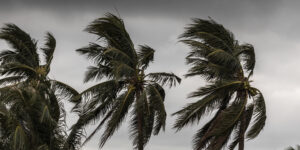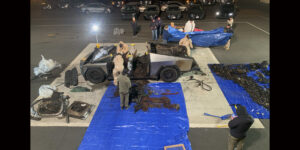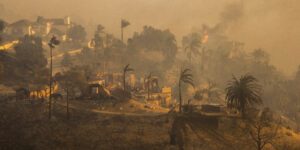If a monster earthquake struck off Alaska’s coast, tsunami waves would rush toward California, crippling the nation’s busiest port complex and flooding coastal communities, a report released Wednesday suggests.
The potential impacts, based on a hypothetical magnitude-9.1 jolt off the Alaskan peninsula, were detailed by a team led by the U.S. Geological Survey to help emergency responders prepare.
Tsunamis are a rare but real threat in California. After the 2011 Japan disaster, tsunami waves raced across the Pacific and damaged boats and docks in the commercial fishing village of Crescent City.
Scientists said a closer offshore quake would create more havoc. The twin ports of Los Angeles and Long Beach could be shuttered for at least two days because of strong currents, potentially losing $1.2 billion in business. The Oakland Airport would be flooded. Coastal communities would face mass evacuations, the report said.
Coastal planners held meetings this week around the state to digest the information and review their evacuation plans.
Under the scenario, it would take about four hours for tsunami waves to crash into communities near the Oregon state line and about six hours to reach San Diego—theoretically allowing time for people to flee to higher ground. The force of the waves would sink boats docked in marinas and damage harbors.
This “helps them understand what a bad tsunami can be,” said USGS seismologist Lucy Jones.
The team began work on the scenario before the magnitude-9.0 earthquake that struck Japan in March 2011 and triggered a tsunami. It went back to the drawing board after seeing the toll on Crescent City and other coastal cities. The group focused only on California, even though a powerful offshore Alaska quake would affect the entire West Coast.
Patrick Corcoran, an Oregon State University expert on earthquake and tsunami hazards, praised the scenario for being realistic. But he said it’s a challenge to prepare people for a rare disaster.
“People just go into freak-out mode” when past tsunamis have hit the U.S., said Corcoran, who had no role in the report.
The latest scenario is similar to a quake exercise released several years ago designed to prepare California residents for the “Big One” on the San Andreas Fault. Unlike the quake report that estimated 1,800 casualties, scientists did not include a death toll this time since they could not predict how evacuations would be handled during a tsunami.
Since 1812, the California coast has seen only a handful of tsunamis with waves higher than 3 feet. The deadliest occurred in 1964 when a magnitude-9.2 quake in Alaska triggered tsunami waves that killed 12 people in Northern California.





















 Slideshow: Carrier Management’s 2024 Top Editor’s Picks (Unlocked)
Slideshow: Carrier Management’s 2024 Top Editor’s Picks (Unlocked)  E&S Market Sees 21% Compound Growth Within Past 5 Years: Conning
E&S Market Sees 21% Compound Growth Within Past 5 Years: Conning  U.S. Insurance Deals Outlook: More, More, More
U.S. Insurance Deals Outlook: More, More, More  Study: Widening Gap Between Cyber Attack Causes, Public Perception
Study: Widening Gap Between Cyber Attack Causes, Public Perception 




